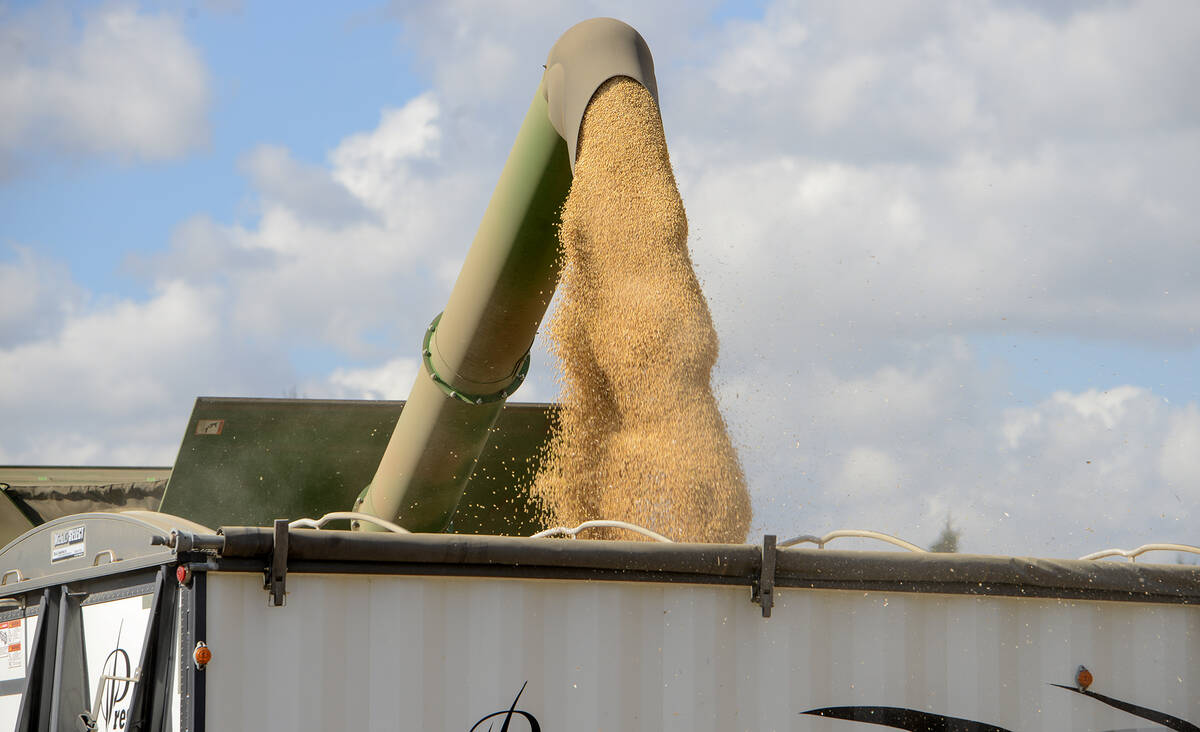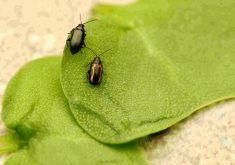It’s less than ideal, but in a spring like this one, some Manitoba farmers are looking at broadcast canola as their only option — other than not seeding at all.
“In general, broadcast seeding is not recommended,” Anastasia Kubinec, then Manitoba Agriculture’s oilseed specialist, wrote in a 2010 article. “This includes seeding canola by aircraft….If it’s too wet to drive across, it’s too wet to seed with any method.”
Why it matters: A relentlessly wet spring in 2022 has producers wondering how much of a window they will actually have for seeding this year.
Read Also

Grain markets hungry for U.S. data
The U.S. government shutdown meant that futures markets were left without robust grain supply information
It also, the same article noted, comes with “substantial yield reductions when conditions are not optimum for germination,” regardless of the broadcast equipment used. (For a new Manitoba Agriculture fact sheet on the topic, click here.)
If it’s done, though, the experts say the key will be incorporation and getting good seed-to-soil contact — and the producer will have to take crop insurance into account.
Crop insurance
“It’s a two-step process,” David Van Deynze, Manitoba Agricultural Services Corp.’s chief product officer, said May 19. “We won’t insure it unless they at least harrow it (the seed) in. It also needs to achieve a decent stand. It’s those two pieces, but incorporation is probably the biggest key I’d suggest.
“If they used an airplane, they need to tell us that they used an airplane on their seed acreage report, because then we will go and check.”
The below text is an edited version of an article first appearing in Canola Watch. Disclaimer: Canola Watch content is research-based, but broadcast canola seeding is not well researched. These tips are based on experience. A full version of this article can be found on the Canola Watch site.
Setting up for success
by Jay Whetter
Best results for rapid and uniform canola emergence come when seed is placed a half- to one-inch deep into warm, moist soil and packed lightly. However, broadcast seeding can work in a pinch.
Timing
Broadcast seeding in late May could have higher yield potential than waiting two weeks for ground to support the drill.
Manitoba crop insurance data shows canola seeded in Manitoba the first week of June yields 90 per cent of average. Another interpretation is that field conditions still have time to improve and allow for “regular” seeding and decent yield potential.
If by late May or early June, broadcast seeding still appears to be the best solution, the warmer soils should result in rapid germination and seedling establishment.
Seeding rate
With a seeding rate of 10 seeds per square foot, low emergence of 20 per cent will result in two plants per square foot. That’s not great, but not a disaster as long as the stand is relatively uniform.
One study showed an established, uniform canola stand with as few as two plants per square foot generally had higher economic potential than a thicker stand re-seeded late.
If emergence is 80 per cent, the population will be at the top end of the recommended target of five to eight plants per square foot.
A higher plant population field will mature earlier.
Equipment
Floaters or Valmar-based applicators can broadcast canola.
Some applicators have multiple compartments, each with meters, to apply fertilizer and seed at the same time.
Another option is a regular air drill with openers lifted out of the ground. This requires fields firm enough for travel, but it avoids the drag and “mudding in.”
If fields are iffy for firmness, reduce weight by fertilizing later.
Talk to the operator
Broadcasting canola is uncommon, so operators may have little or no experience.
Applied at such low rates, canola presents a metering challenge. The grower may want to be there for the first field to check the seed bin after the first few acres.
If the operator is seeding a lot of acres, ask if they have checked for plugging throughout the airflow distribution system.
Fertilizer
A good-yielding crop needs fertilizer.
Apply at least the recommended rate of phosphorus. Canola plants need early access to phosphorus.
When broadcast, phosphate prills and seed are not always close enough for timely access to fertilizer, so the starter rate is not enough. Use the full recommended rate when broadcasting.
Canola with phosphorus often gets off to a quicker start, which can reduce days to maturity.
Use urease and nitrification inhibitors to limit nitrogen loss, especially when applied on very moist soils.
Consider a slightly lower than recommended nitrogen rate—perhaps 85 to 90 per cent of soil test recommendation—in late May or early June. The full rate could extend the required days to maturity.
Seed soon after blending. When seed and fertilizer are blended hours or days prior to application, fertilizer could reduce canola seed viability.
Fertilizer prills are also abrasive and can remove some of the canola seed treatment. This is especially true for ammonium sulphate.
Ammonium sulphate also has an affinity for moisture and can increase plugging in humid conditions.
Blending phosphorus or urea with canola seed bulks it up, which could make application rates less finicky.
Consider a split fertilizer application. Growers could broadcast their seed, then top up with appropriate the fertilizer if the crop gets established. However, early nutrient access is important for optimal yields, so top dressing should be made as soon as possible after emergence.
If the key barrier to using the drill is the risk of getting stuck pulling a fully-loaded cart, growers could broadcast nitrogen and sulphur, and use the drill just for seed and phosphorus.
High residue risk
With a thick layer of thatch, seed and fertilizer won’t reach the soil. Cultivating ahead of broadcasting could create an equally inhospitable seedbed, with large clods and a crusted soil surface. Fields with thick residue that are too wet for a cultivator or harrows probably shouldn’t be broadcast-seeded.
The ideal harrowing pass will run on a right angle to the floater pass to spread the seed and fertilizer. For this reason, harrow after the floater leaves rather than chase the floater.
Aerial seeding
Pilots can do it, but if the field is too wet for a floater, it’s too wet for harrows and sprayers.
Weed control
Be careful with weed control timing. Seeds on the soil surface are highly vulnerable to herbicide. Do not apply post-seed/pre-emergence glyphosate on Liberty Link and Clearfield canola varieties that have been broadcast and remain on the soil surface.
Roundup Ready varieties can tolerate glyphosate at this early stage.
Yield expectation
Canola Watch reported the following on broadcast seeding yields from 2010 and 2011: “Experience from the past two years of wet conditions in the eastern Prairies has shown that, in general, growers who tried broadcast or aerial methods to get fields seeded had issues all season long with thin stands, uneven maturity, weed control, low fertility and poor yields. Best results from broadcast seeding came from fields that were fertilized early and harrowed to improve seed to soil contact.”
It was noted that if field conditions allow for follow up passes to harrow and apply fertilizer, fields could also soon be ready to seed with the drill.
Farmers still a couple of weeks away from seeding with a drill may want to inquire about a floater as backup just in case further weather delays make drill seeding impractical.
— Jay Whetter is communications director and Canola Watch editor for the Canola Council of Canada.
















